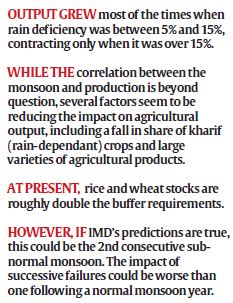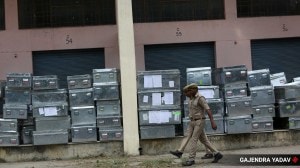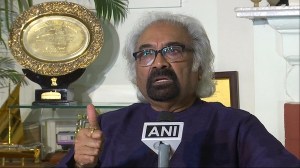- India
- International
Food processing: Sliced and served
Over 60% cut in funds to affect Central schemes; ministry claims Make in India’s rural push to be dented.
 As per the Annual Survey of Industries (ASI), the sector has a total of 37,175 registered food processing units. (Illustration by: C R Sasikumar)
As per the Annual Survey of Industries (ASI), the sector has a total of 37,175 registered food processing units. (Illustration by: C R Sasikumar)
Amid A tepid monsoon forecast, any hope of a compensatory push to the rural economy by way of the NDA government’s renewed thrust on the food processing sector under its flagship ‘Make in India’ initiative seems to be petering out. In a categorical assertion, the Ministry of Food Processing Industries has submitted to a parliamentary panel that most of its on-going Central sector schemes will be “adversely affected” due to an over 60 per cent cutback in allocation to it during the current year — 2015-16.
 Of these, at least four schemes that entailed employment generation in the rural heartland are being put on the back burner, including projects under the Integrated Cold Chain Scheme, considered crucial in view of a huge cold chain gap of 29 million metric tonnes. That apart, projects likely to be affected, according to the submission made by the ministry before the parliamentary standing committee on agriculture, include the Mega Food Park Scheme and Modernisation of Abattoir Schemes that are in various stages of implementation and were up for completion this fiscal.
Of these, at least four schemes that entailed employment generation in the rural heartland are being put on the back burner, including projects under the Integrated Cold Chain Scheme, considered crucial in view of a huge cold chain gap of 29 million metric tonnes. That apart, projects likely to be affected, according to the submission made by the ministry before the parliamentary standing committee on agriculture, include the Mega Food Park Scheme and Modernisation of Abattoir Schemes that are in various stages of implementation and were up for completion this fiscal.
These, a senior official in the ministry said, are “likely to be affected adversely and the completion of many of these projects is likely to be delayed”, while the committed liabilities under the scheme of Technology Upgradation, Modernisation and Setting up of Food Processing Industries and Human Resources Development Scheme will need to be carried forward due to the cutback in allocation of plan funds during the current fiscal.
Typically, for sectors that have seen a slash in allocations as a result of the finance ministry’s pursuit to better the 4.1 per cent fiscal deficit target, the most effective bargaining chip seems to be in holding out the threat that the cutback would hit the flagship programme that is being driven right from the top – the ‘Make In India’ initiative. In the agriculture sector, the food processing segment, which was expected to shoulder much of the load of the ‘Make in India’ push on the farm side, the ministry’s point of contention is the 63 per cent reduction in the allocation for the year 2015-16, with just Rs 487 crore having been allocated as against the Rs 1471.03 crore sought by it for the year.
 One of the reasons cited by the finance ministry for the cut in the allocation is that the Centre has decided that the Centrally Sponsored Scheme of National Mission on Food Processing of this ministry be de-linked from Central government support and the resources earmarked for the scheme will be transferred to the states. Currently, India is the third largest food producer in the world, yet barely 2.2 per cent of fruits and vegetables are processed. The challenges of insufficient infrastructure are leading to wastage and undue advantage to middlemen at the cost of farmers’ remuneration. Under the ‘Make in India’ scheme, the government says its focus is on compressing supply chains and to make them consistent, quicker and efficient for supply of farm produce for food processing.
One of the reasons cited by the finance ministry for the cut in the allocation is that the Centre has decided that the Centrally Sponsored Scheme of National Mission on Food Processing of this ministry be de-linked from Central government support and the resources earmarked for the scheme will be transferred to the states. Currently, India is the third largest food producer in the world, yet barely 2.2 per cent of fruits and vegetables are processed. The challenges of insufficient infrastructure are leading to wastage and undue advantage to middlemen at the cost of farmers’ remuneration. Under the ‘Make in India’ scheme, the government says its focus is on compressing supply chains and to make them consistent, quicker and efficient for supply of farm produce for food processing.

 Under the ‘Make in India’ initiative, the food processing sector has been identified as one of the priority sectors and Mega Food Parks, with common utility like road, electricity, water supply, sewage facility and common processing facility like pulping, packaging, cold storage, dry storage and logistics, are being promoted in areas with strong agricultural resource base. These parks are to provide fully developed plots and factory sheds to entrepreneurs on long-term lease basis where they can set up food processing units in “plug & play model”.
Under the ‘Make in India’ initiative, the food processing sector has been identified as one of the priority sectors and Mega Food Parks, with common utility like road, electricity, water supply, sewage facility and common processing facility like pulping, packaging, cold storage, dry storage and logistics, are being promoted in areas with strong agricultural resource base. These parks are to provide fully developed plots and factory sheds to entrepreneurs on long-term lease basis where they can set up food processing units in “plug & play model”.
The Ministry of Food Processing Industries has cited the increasing importance of government funds in light of the thin private participation in the sector. “Now, with this allocation (this fiscal’s Rs 487 crore), we have no option but to reallocate to schemes in whatever proposal they come to us. So, in this year also we will face problem and we will be having more claims for payment but we may not be having the sufficient allocation,” an official in the ministry said.
As per the Annual Survey of Industries (ASI), the sector has a total of 37,175 registered food processing units with fixed capital of nearly Rs 1.59 lakh crore and aggregate output of around Rs 7.49 lakh crore in value terms. Major segments include grain mill, sugar, edible oils, beverages and dairy products. As per the latest ASI data for 2012-13, the total number of persons engaged in registered food processing sector is 16.89 lakh.
 During the five years ending 2012-13, employment in registered food processing sector has been increasing at an average annual growth rate of 2.41 per cent. The value of processed food exports during 2013-14 was of the order of $37.79 billion (total exports $312 billion) constituting 12.1 per cent of India’s total exports.
During the five years ending 2012-13, employment in registered food processing sector has been increasing at an average annual growth rate of 2.41 per cent. The value of processed food exports during 2013-14 was of the order of $37.79 billion (total exports $312 billion) constituting 12.1 per cent of India’s total exports.
According to Ashok Gulati, Infosys Chair Professor for Agriculture at the Indian Council for Research on International Economic Relations (ICRIER), almost 90 per cent of the country’s cold storages store only potatoes. The three solutions to high price volatility in the fresh perishable commodities — to have more storage facilities, to have more processing or to have more free trade.
Apr 24: Latest News
- 01
- 02
- 03
- 04
- 05







































